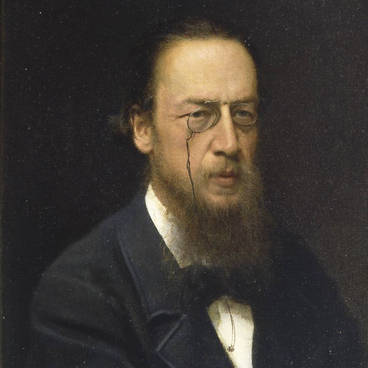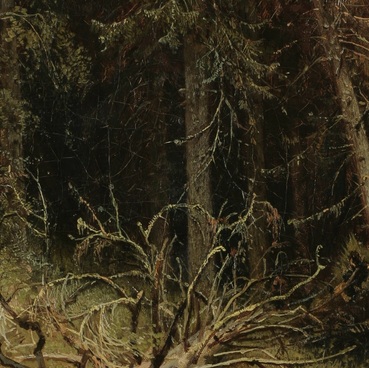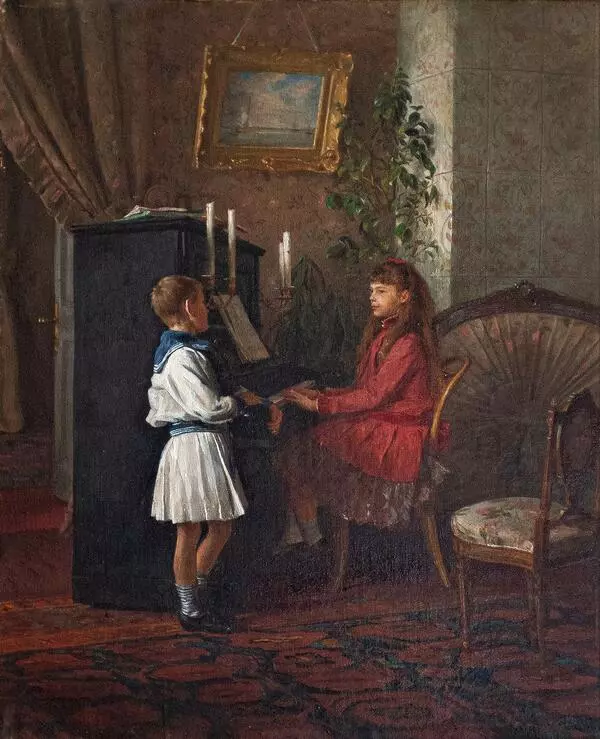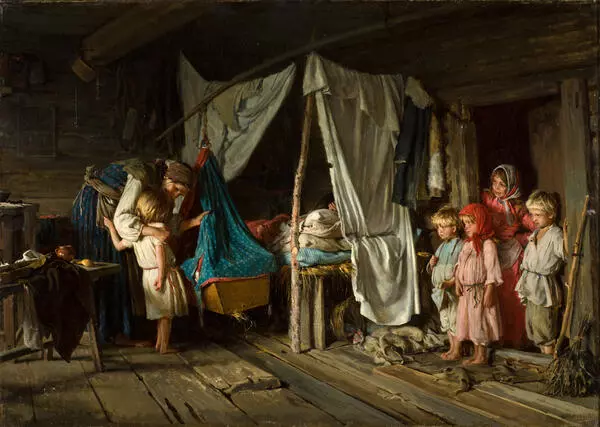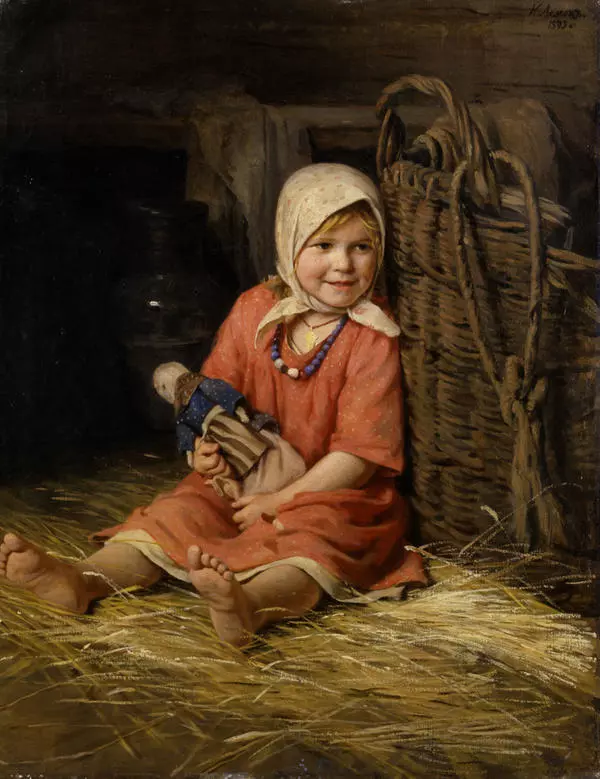Famous genre painter Kirill Lemoch was born in Moscow, in the family of a music teacher of German origin. He studied at the Moscow School of Art, Sculpture and Architecture, then entered the Imperial Academy of Arts, class of history painting.
In 1863, for his painting Moses Striking Water from the Rock, Lemoch was awarded a Small Gold Medal and the title of Artist Second Class. However, later, together with thirteen other undergraduates, he refused to complete the program of the Large Medal competition and withdrew from the Academy. This case came down in history of art as the ‘Revolt of the Fourteen’. Beside Lemoch, Ivan Kramskoi, Konstantin Makovsky, Alexander Morozov, and other followers of the national realistic art school, which started to form in the 19th century in opposition to the academic tradition, took part in the protest.
Kirill Lemoch became one of the founders of the Saint Petersburg Artel of Artists and then — the Association of Itinerant Art Exhibitions. The Itinerants’ art was characterized by the address to people, creation of portraits of peasants and realistic representation of their everyday life. In particular, Lemoch created numerous paintings dedicated to peasant children. He was awarded the title of Academician for the “art in comprehension of folk scenes painting”.
The painter’s sentimental compositions were a great success, also at the court. For example, The Convalescent was purchased by no less a person than Empress Maria Feodorovna.
Lemoch searched for distinctive child characters for his works. The artist showed peasant life truthfully, but selectively, smoothing over some details not conforming with the aesthetic concepts of that time. Many genre paintings were created by Lemoch in his studio in the village of Khovrino.
The artist’s acquaintance Yakov Minchenkov wrote in his book “The Memories about Itinerants” that Kirill Lemoch was a very gentle, delicate man. He often helped peasants in the village: he himself built a well, helped to construct log huts for burned out villagers, put in funds those in need.
In 1863, for his painting Moses Striking Water from the Rock, Lemoch was awarded a Small Gold Medal and the title of Artist Second Class. However, later, together with thirteen other undergraduates, he refused to complete the program of the Large Medal competition and withdrew from the Academy. This case came down in history of art as the ‘Revolt of the Fourteen’. Beside Lemoch, Ivan Kramskoi, Konstantin Makovsky, Alexander Morozov, and other followers of the national realistic art school, which started to form in the 19th century in opposition to the academic tradition, took part in the protest.
Kirill Lemoch became one of the founders of the Saint Petersburg Artel of Artists and then — the Association of Itinerant Art Exhibitions. The Itinerants’ art was characterized by the address to people, creation of portraits of peasants and realistic representation of their everyday life. In particular, Lemoch created numerous paintings dedicated to peasant children. He was awarded the title of Academician for the “art in comprehension of folk scenes painting”.
The painter’s sentimental compositions were a great success, also at the court. For example, The Convalescent was purchased by no less a person than Empress Maria Feodorovna.
Lemoch searched for distinctive child characters for his works. The artist showed peasant life truthfully, but selectively, smoothing over some details not conforming with the aesthetic concepts of that time. Many genre paintings were created by Lemoch in his studio in the village of Khovrino.
The artist’s acquaintance Yakov Minchenkov wrote in his book “The Memories about Itinerants” that Kirill Lemoch was a very gentle, delicate man. He often helped peasants in the village: he himself built a well, helped to construct log huts for burned out villagers, put in funds those in need.


